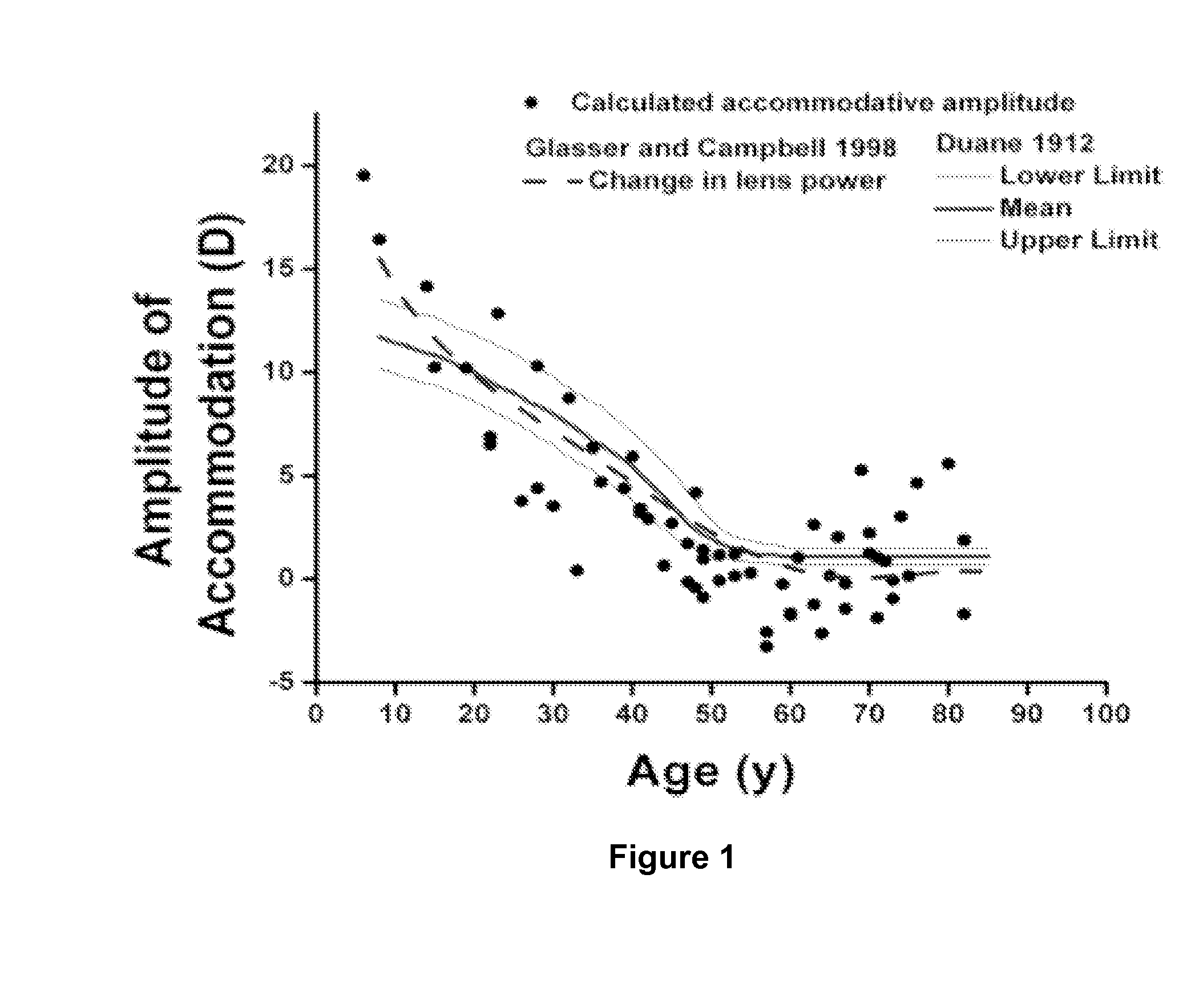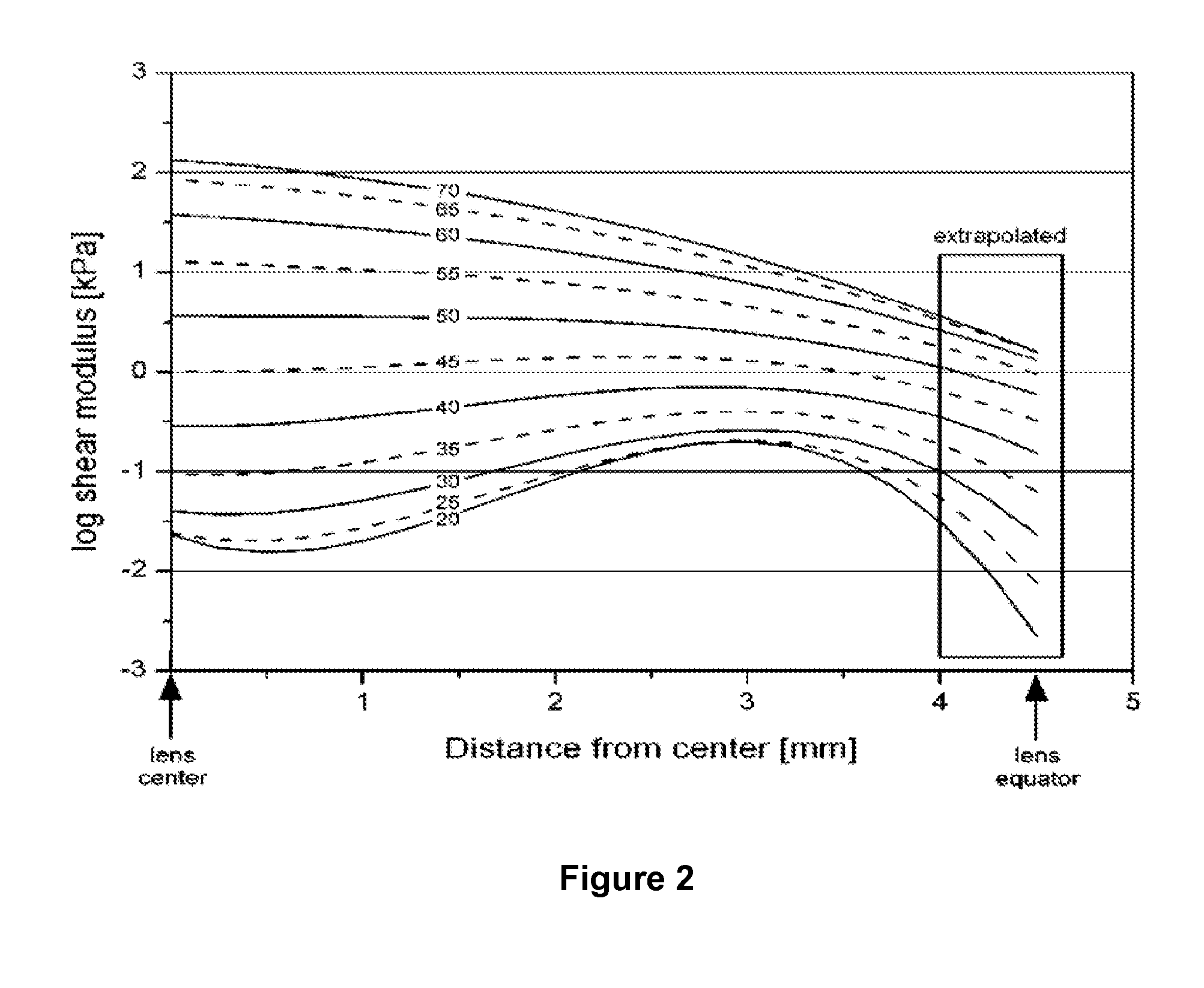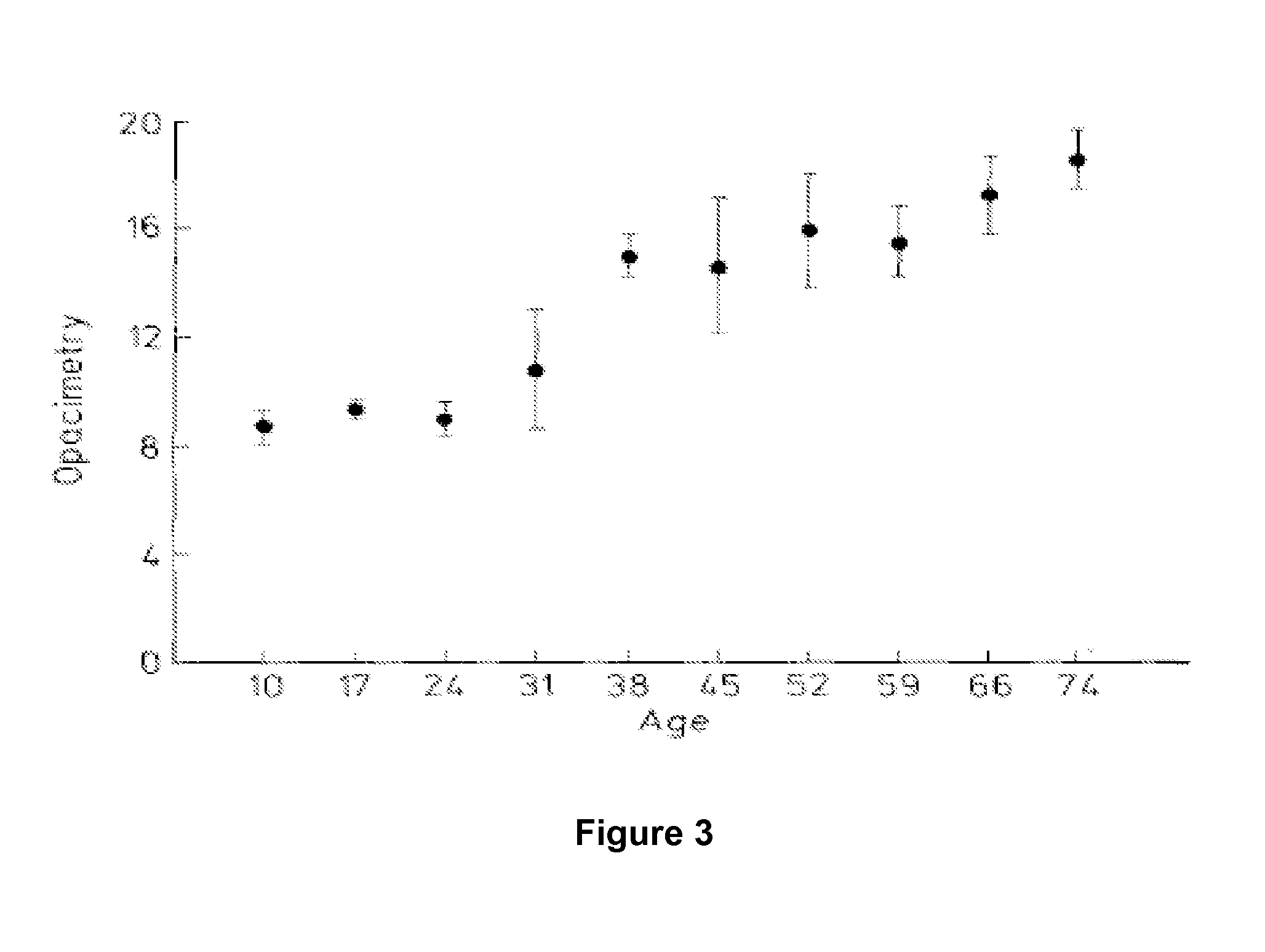Choline esters
a technology of choline esters and esters, which is applied in the field of choline esters, can solve the problems of more difficult to focus on near objects
- Summary
- Abstract
- Description
- Claims
- Application Information
AI Technical Summary
Benefits of technology
Problems solved by technology
Method used
Image
Examples
example 1
In Vitro Toxicology Studies
[0090]Cell viability was determined using human umbilical vein endothelial cells (HUVEC, first passage). Cells were treated with the active agent in doses ranging from 0.1 μM to 100 μM. The number of live and dead cells was determined using the MultiTox-Fluor assay (Promega) or Live / Dead® assay (Invitrogen). Logistic plots were used to determine the compound's LD50 value. Lipoic acid was not cytotoxic in the concentration range.
example 2
[0091]Increase in Elasticity: Pairs of mouse lenses were incubated in medium 200 supplemented with an antibiotic, an antimycotic, in the presence or absence of lipoic acid (concentrations ranging from 0.5 μM to 500 μM) for 8-15 hours. Each lens was removed from medium, weighed, and photographed on a micrometer scale. A coverslip of known weight (0.17899±0.00200 g) was placed on the lens, and the lens was photographed again on the micrometer scale. The diameter of each lens with and without the coverslip was determined from the photographs. The change in lens diameter produced by the force (coverslip) was computed ΔD=(Dwithcoverslip−Dwithoutcoverslip). The results (FIG. 4, ‡) indicate that lipoic acid at concentrations ≧9.6 μM caused a statistically significant increase in ΔD, p<0.0001.
[0092]Decrease in disulfide bonds: Lipoic acid at concentrations ≧9.6 μM caused a statistically significant decrease in protein disulfides in the mouse lenses where there was a...
example 3
Syntheses of Lipoic Acid Choline Ester
[0093]Lipoic acid choline ester was prepared according to the following synthetic route. Choline salts of alternative reducing agents can be similarly prepared by making the appropriate reagents substitutions. Also, one of ordinary skill in the art would recognize that these syntheses are provided as guidance and that reagents, conditions, amounts, temperatures, and the like may be modified without departing from the general synthetic pathway.
[0094]Step 1:
[0095]
[0096](R)-2-(dimethylamino)ethyl 5-(1,2-dithiolan-3-yl)pentanoate. A solution of DCC (11 g, 53 mmol) in anhydrous CH2Cl2 (20 mL) was added with stirring over 10-20 minutes to a cold (0° C.) solution of R-lipoic acid (10.0 g, 48.5 mmol), N,N-dimethylethanolamine (14.5 mL, 145 mmol, 3 eq.), and DMAP (600 mg, 4.9 mmol) in anhydrous CH2Cl2 (50 mL). Following complete addition, the cold bath was removed. After 18 hours at room temperature, all volatiles were removed under reduced pressure, and...
PUM
| Property | Measurement | Unit |
|---|---|---|
| diameter | aaaaa | aaaaa |
| lipoic acid | aaaaa | aaaaa |
| tonicity | aaaaa | aaaaa |
Abstract
Description
Claims
Application Information
 Login to View More
Login to View More - R&D
- Intellectual Property
- Life Sciences
- Materials
- Tech Scout
- Unparalleled Data Quality
- Higher Quality Content
- 60% Fewer Hallucinations
Browse by: Latest US Patents, China's latest patents, Technical Efficacy Thesaurus, Application Domain, Technology Topic, Popular Technical Reports.
© 2025 PatSnap. All rights reserved.Legal|Privacy policy|Modern Slavery Act Transparency Statement|Sitemap|About US| Contact US: help@patsnap.com



